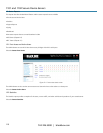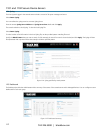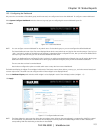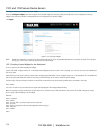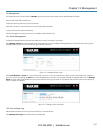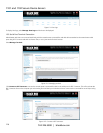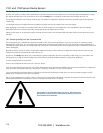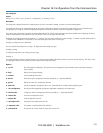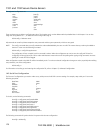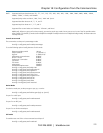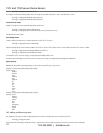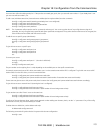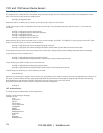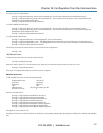
1101 and 1102 Secure Device Servers
724-746-5500 | blackbox.com
118
14. Configuration from the Command Line
For those who prefer to configure their console server at the Linux command line level (rather than use a browser and the Management Console),
this chapter describes how to use command line access and the config tool to manage the console server and configure the ports, etc.
This config documentation in this chapter walks through command line configuration to deliver the functions provided using the Management
Console GUI.
For advanced and custom configurations and for details using other tools and commands, refer to the next chapter.
When displaying a command, the convention used in the rest of this chapter is to use single quotes ('') for user-defined values (for example,
descriptions and names). Element values without single quotes must be typed exactly as shown.
After the initial section on accessing the config command, the menu items in this document follow the same structure as the menu items in the
web GUI.
14.1 Accessing config from the Command Line
The console server runs a standard Linux kernel and embeds a suite of open source applications. If you do not want to use a browser and the
Management Console tools, you can configure the console server and manage connected devices from the command line using standard Linux
commands and applications such as ifconfig, gettyd, stty, powerman, nut etc. Without care, these configurations may not withstand a power-cycle-
reset or reconfigure.
Black Box provides a number of custom command line utilities and scripts to make it simple to configure the console server and make sure the
changes are stored in the console server's flash memory, etc.
In particular, the config utility allows you to manipulate the system configuration from the command line. With config, you can activate a new
configuration by running the relevant configurator, which performs the action needed to make the configuration changes live.
To access config from the command line:
Power on the console server and connect the “terminal” device:
If you are connecting using the serial line, plug a serial cable between the console server local DB9 console port and terminal device. Configure the
serial connection of the terminal device you are using to 115200 bps, 8 data bits, no parity, and one stop bit.
If you are connecting over the LAN, then you will need to interconnect the Ethernet ports and direct your terminal emulator program to the IP
address of the console server (192.168.0.1 by default).
Log on to the console server by pressing “return” a few times. The console server will request a username and password. Enter the username root
and the password default. You should now see the command line prompt which is a hash (#).
This chapter is not intended to teach you Linux. We assume you
already have a certain level of understanding before you execute
Linux kernel level commands.



